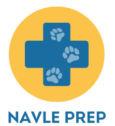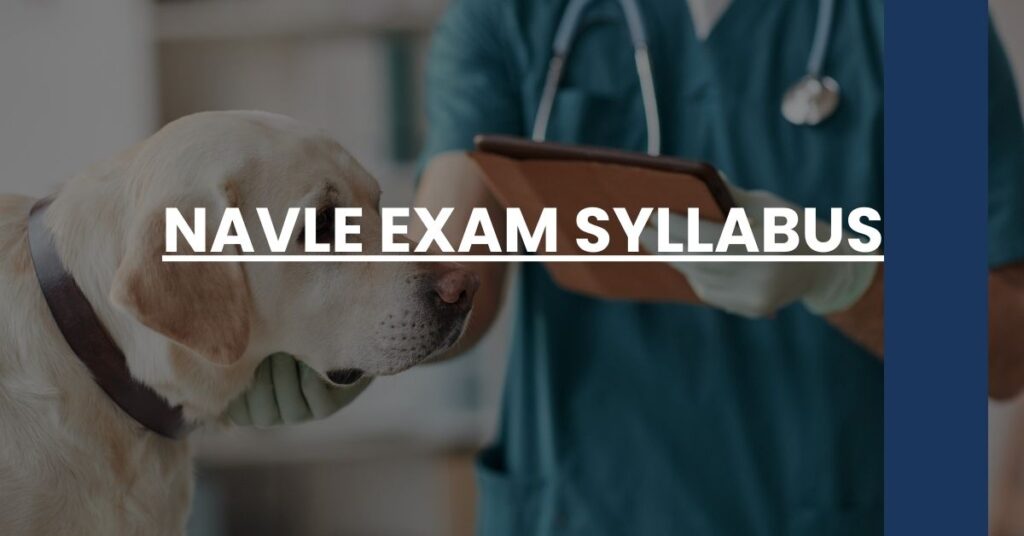Embark on your veterinary career with the NAVLE exam syllabus as your guide to success.
- NAVLE Exam Topics: Key subjects that form the cornerstone of veterinary knowledge.
- Eligibility Criteria: Essential qualifications to qualify for the NAVLE.
- Preparation Strategies: Effective study resources for mastering the syllabus.
Navigate through the NAVLE exam syllabus to achieve your veterinary aspirations.
- Understanding the NAVLE
- NAVLE Exam Eligibility
- Breakdown of the NAVLE Exam Syllabus
- NAVLE Exam Registration Process
- Test Day: What to Expect
- NAVLE Scores and Results Interpretation
- Retaking the NAVLE: Policies and Procedures
- Preparing for the NAVLE: Study Resources and Tips
- Application Process for International Candidates
- Frequently Asked Questions (FAQs) About the NAVLE
- Conclusion: Striding Towards Success in Veterinary Medicine
Understanding the NAVLE
When plotting your path to becoming a licensed veterinarian in North America, the North American Veterinary Licensing Examination (NAVLE) stands as a pivotal milestone. Administered by the International Council for Veterinary Assessment (ICVA), the NAVLE is a rigorous, comprehensive test that assesses your readiness to enter veterinary practice.
The syllabus for the NAVLE is extensive, probing both your clinical competencies and your grasp of foundational veterinary sciences. Across 300 scored items, candidates are tested on real-world scenarios simulating day-to-day veterinary tasks. For a detailed look at the NAVLE syllabus, you can always refer to the NAVLE Candidate Bulletin for the most current test information.
NAVLE Syllabus Deep Dive
The NAVLE exam syllabus encompasses several critical domains:
- Data Gathering and Interpretation: You’ll be tested on your ability to collect and analyze clinical patient data efficiently.
- Health Maintenance: This includes assessing your knowledge on promoting animal wellness through preventive medicine.
- Problem Management: Here, your problem-solving skills for diagnosing and managing animal health issues will be quantified.
- Professional Communication: Effective communication with both clients and peers is essential for a successful veterinary practice.
- Professionalism and Ethics: Ethical considerations and professional behavior when dealing with animals and people.
- Practice Management and Welfare: This area covers the business aspects of veterinary practice and the role of veterinarians in animal welfare advocacy.
Being conversant with the NAVLE exam syllabus positions you for success, not just for test day, but for your career long-term.
NAVLE Exam Eligibility
Before you can dive into the NAVLE exam syllabus in earnest, you need to establish your eligibility. This boils down to two primary routes:
- Graduates or Senior Students of AVMA-Accredited Schools: You’re eligible if you’re approaching graduation or have recently graduated from an American Veterinary Medical Association (AVMA) accredited school.
- Foreign Trained Veterinarians: If you’re an international graduate, you must navigate additional certification via the Educational Commission for Foreign Veterinary Graduates (ECFVG) or the Program for the Assessment of Veterinary Education Equivalence (PAVE). Once complete, you’ll be eligible to sit for the NAVLE.
Eligibility for International Graduates
If you’re an international graduate, pay close attention to the prerequisite requirements including completion of the ECFVG or PAVE step examinations prior to NAVLE approval. This ensures a level playing field and guarantees that all candidates meet the rigorous standards set forth by the ICVA.
Breakdown of the NAVLE Exam Syllabus
The NAVLE exam syllabus is your blueprint for veterinary licensing success. Here’s a snapshot of what to expect:
- Species Specific: Large and small animals, as well as exotics, are all included in NAVLE content.
- Clinical Disciplines: Expect questions on areas such as surgery, medicine, diagnostics, anesthesia, and emergency care.
- Species Distribution: The syllabus is designed with a careful weighting across various animal species, reflective of a general veterinary practice.
Each topic within the NAVLE syllabus represents a building block in your veterinary knowledge.
NAVLE Exam Registration Process
Embarking on the NAVLE involves several administrative steps, beginning with a two-part registration:
- State or Territorial Licensing Board Application: You must first submit an application to the licensing board in the jurisdiction where you wish to practice.
- ICVA Application: Concurrent with the licensing board application, you’ll also need to submit an application directly to the ICVA by the specified deadline.
It’s imperative to adhere to registration and documentation deadlines, as outlined in the ICVA NAVLE bulletin, to avoid any obstacles in your path to licensure.
Test Day: What to Expect
Knowing the layout of the land on test day can markedly reduce stress and streamline your testing experience. At Prometric Test Centers, the check-in protocol mandates:
- Valid Identification: You’ll need to present current, government-issued photo ID.
- Test Center Rules Adherence: Familiarize yourself with and follow all test center policies to ensure a smooth examination process.
On entering the test center, expect a tightly regulated environment designed to maintain the integrity of the examination process. With each component of the NAVLE exam syllabus fresh in your mind, you’ll be ready to tackle the exam confidently.
NAVLE Scores and Results Interpretation
Once you’ve completed the NAVLE, you’ll be eagerly anticipating your scores. Understanding how these numbers translate to your performance is essential.
- Scoring System: The NAVLE scores range between 200 and 800, with the minimum passing score typically set around 425. You receive a standard score accompanied by a pass/fail notification.
- Results Timeline: Results are usually reported to the respective licensing board and to you within four to six weeks after the examination window closes.
- Understanding Percentiles: Your score report will also include a percentile rank, reflecting your performance relative to other candidates in the same test window.
Compiling your score against the NAVLE exam syllabus will give you insight into areas of strength and those requiring further reinforcement. The ICVA conducts a standard setting exercise to ensure fair score assessments across all test periods and versions.
Enhancing Your Score
In the instance that your score does not meet the expected benchmark, consider the following steps:
- Review Feedback: Reflect deeply on the score report, focusing on areas aligned with the NAVLE exam syllabus where you had the most challenges.
- Develop a Plan: Structure a targeted study plan addressing identified weaknesses within the syllabus, possibly with additional resources or a prep course.
- Monitor Progress: Regularly evaluate your progress in these areas, adapting your approach as necessary to magnify effectiveness.
Through methodical and reflective practice, the NAVLE exam syllabus will become less formidable, and your ability to excel will grow.
Retaking the NAVLE: Policies and Procedures
If you do not pass the NAVLE, understanding the retake policies is paramount for your continued journey toward licensing.
- Attempt Limits: The NAVLE can be taken up to five times within a specific eligibility period.
- Appeal Process: After exhausting the initial five attempts, you must undergo an appeal process to seek approval for additional attempts, which must be verified by a licensing board.
Confronting the need to retake an examination can be challenging, but with each attempt comes a deeper understanding of the NAVLE exam syllabus and a greater aptitude for successfully navigating the test.
Strategies for Improvement
To augment your performance in future sittings:
- Seek Feedback: Request detailed insights from mentors, educators, or study groups on the NAVLE exam syllabus areas you found troublesome.
- Adjust Study Habits: Revise your study habits and incorporate techniques like active recall, spaced repetition, and practice questions.
- Leverage Retake Resources: Utilize the available resources tailored for retake candidates, ensuring that they address the breadth of the NAVLE exam syllabus.
Preparing for the NAVLE: Study Resources and Tips
Preparation is key to conquering the NAVLE and the dense syllabus that accompanies it. Arm yourself with a robust study plan and quality resources for a dynamic and thorough review.
Building Your Study Plan
A careful approach to studying can smooth out any knotty areas in the NAVLE exam syllabus:
- Create a Timeline: Construct a study schedule that includes all syllabus topics, distributing your time according to the complexity and your prior knowledge of each area.
- Select Resources: Curate your study materials carefully, ensuring they provide comprehensive coverage of the NAVLE syllabus. Resources like VetPrep can be invaluable for this step.
- Practice Regularly: Regularly take timed practice examinations to build stamina and become comfortable with the pace you’ll need to maintain.
Remember, the NAVLE exam syllabus is extensive, and familiarizing yourself with each topic over time can significantly reduce the pressure when the test day arrives.
Application Process for International Candidates
For veterinary graduates outside of North America, the NAVLE exam syllabus is just one part of the picture. Understanding the intricacies of the application process is imperative.
- Validation of Education: Ensure that your veterinary degree is recognized through programs like ECFVG or PAVE.
- Completing Preceding Steps: Before NAVLE approval, international graduates must have completed the Step 3 exam requirement of the certification process.
This additional layer of qualification ensures that all veterinarians, regardless of where they were trained, meet the comprehensive standards defined by the NAVLE syllabus.
Frequently Asked Questions (FAQs) About the NAVLE
Approaching the NAVLE involves navigating complex information beyond the syllabus content. Let’s unpack some of the frequently asked questions that can clarify the process.
Exam Accommodations and Locations
- Accommodations: If you have a disability, you may be eligible for testing accommodations. Ensure your request is well-documented and submitted in compliance with the ICVA’s guidelines.
- Exam Centers: The NAVLE is offered in numerous locations worldwide, including numerous Prometric Test Centers. Find one that’s most convenient for you.
Retake Policies and Administrative Aspects
- Retake Limits and Timing: Understanding the protocols for retaking the NAVLE can alleviate anxiety and allow for more strategic planning.
- Administrative Concerns: Being well versed in exam fees, refund policies, and other administrative procedures can prevent any unforeseen complications.
Each question you clarify or confusion you dispel brings you closer to a smooth experience with the NAVLE and the expansive exam syllabus it encompasses.
Conclusion: Striding Towards Success in Veterinary Medicine
A methodical approach to the NAVLE exam syllabus, combined with an in-depth understanding of the eligibility criteria, registration process, and appropriate examination tactics, sets the stage for success in the NAVLE and beyond. The journey through the syllabus and subsequent exam is an investment in your future as a veterinary professional. Your dedication to mastering each element of the NAVLE prepares you not only to pass the exam but to excel in a field that relies on continual learning and improvement.
Engage with the NAVLE exam syllabus fully, embracing it as a roadmap for a career dedicated to the health and well-being of animals. Your commitment to this endeavor speaks volumes about your passion for veterinary medicine and your resolve to serve as a compass for animal care. With each topic you master and each skill you refine, you’ll draw one step closer to your goal of becoming a licensed veterinarian—ready to face the challenges of the profession with confidence, aptitude, and a strong ethical compass.
NAVLE Exam Syllabus guide: Essential topics, registration details, study tips, and scoring for aspiring veterinarians on their licensing path.

